Micro-catchment water harvesting potential of an arid environment

Authors:
Micro-catchment water harvesting (MCWH) requires development of small structures across mild land slopes, which capture overland flow and store it in soil profile for subsequent plant uses. Water availability to plants depends on the micro-catchment runoff yield and water storage capacity of both the plant basin and the soil profile in the plant root zone. This study assessed the MCWH potential of a Mediterranean arid environment by using runoff micro-catchment and soil water balance approaches. Average annual rainfall and evapotranspiration of the studied environment were estimated as 111 and 1671 mm, respectively. This environment hardly supports vegetation without supplementary water. During the study period, the annual rain was 158 mm in year 2004/2005, 45 mm in year 2005/2006 and 127 mm in year 2006/2007. About 5000 MCWH basins were developed for shrub raising on a land slope between 2 and 5% by using three different techniques. Runoff at the outlets of 26 micro-catchments with catchment areas between 13 and 50 m2 was measured. Also the runoff was indirectly assessed for another 40 micro-catchments by using soil water balance in the micro-catchments and the plant basins. Results show that runoff yield varied between 5 and 187 m3 ha−1 for various rainfall events. It was between 5 and 85% of the incidental rainfall with an average value of 30%. The rainfall threshold for runoff generation was estimated about 4 mm. Overall; the soil water balance approach predicted 38–57% less water than micro-catchment runoff approach. This difference was due to the reason that the micro-catchment runoff approach accounted for entire event runoff in the tanks; thus showed a maximum water harvesting potential of the micro-catchments. Soil water balance approach estimated water storage in soil profile and did not incorporate water losses through spillage from plant basins and deep percolation. Therefore, this method depicted water storage capacity of the plant basins and the root zone soil profile. The different between maximum water harvesting potential and soil-water storage capacity is surplus runoff that can be better utilized through appropriate MCWH planning.
